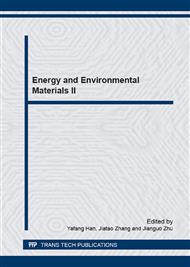[1]
D.X. Tang, J.H. Zhao, H. Wang, P.D. Yang, Technology analysis and enlightenment of drilling engineering applied in the development of Barnett shale gas in America, Sino-Global Energy. 16(2011) 47-52.
Google Scholar
[2]
M. Cao, P. Shu, Shale gas and the accumulation mechanism, China Chemical Trade. 10(2013) 325.
Google Scholar
[3]
J.C. Zhang, B. Xu, H.K. Nie, Z.Y. Wang, T. Lin, Exploration potential of shale gas resources in China, Natural Gas Industry. 28(2008) 136-140.
Google Scholar
[4]
J.Y. Xu, A.J. Wu, The development of status shale gas in the world and its prospect in China, Special Oil and Gas Reservoirs. 17(2010) 1-8.
Google Scholar
[5]
S.H. Cui, F.S. Ban, G.J. Yuan, Status quo and challenges of global shale gas drilling and completion, Natural Gas Industry. 31(2011) 72-75.
Google Scholar
[6]
X.D. Bai, X.L. Pu, The performance evaluation of PMMA nano-latex in drilling fluid, Drilling Fluid and Completion Fluid. 27(2010) 8-10.
Google Scholar
[7]
S.H. Cui, S.A. Zhang, B.S. Guan, Synthesis and characterization of temperature-tolerant and salt-resistant polymer hydrogel, Journal of Southwest Petroleum University: Science and Technology Edition. 34(2012) 147-152.
Google Scholar
[8]
A.M. Wu, Brockhoff, Emulsified polymer drilling fluid and methods of preparation. U.S. Patent 7, 951, 755. (2011).
Google Scholar
[9]
Q.Q. Ye, Y.Z. Zhou, D.S. Chen, Cleaning technology on filter cake of silicate-based polymer drilling fluid, Applied Mechanics and Materials. 310(2013) 107-111.
DOI: 10.4028/www.scientific.net/amm.310.107
Google Scholar
[10]
H.G. Wang, L.B. Wang, G.D. Ji, L.B. Zhuo, W.X. Bi, L. Liu, Advances in well drilling and completion technologies for domestic and overseas, Oil Drilling and Production Technology. 35(2013) 1-12.
Google Scholar
[11]
L. Ali, M.A. Barrufet, Using centrifuge data to investigate the effects of polymer treatment on relative permeability, J. Pet. Sci. Eng. 29(2001) 1-16.
DOI: 10.1016/s0920-4105(00)00086-3
Google Scholar
[12]
T. Wan, J. Yao, Z.S. Sun, L. Wang, J. Wang, Solution and drilling fluid properties of water soluble AM-AA-SSS copolymers by inverse microemulsion, J. Pet. Sci. Eng. 78(2011) 334-337.
DOI: 10.1016/j.petrol.2011.06.027
Google Scholar
[13]
J.M. González, F. Quintero, J.E. Arellano, R.L. Márquez, C. Sánchez, D. Pernía, Effects of interactions between solids and surfactants on the tribological properties of water-based drilling fluids, Colloid Surf., A. 391(2011) 216-223.
DOI: 10.1016/j.colsurfa.2011.04.034
Google Scholar
[14]
X.D. Bai, X.L. Pu, Study of organic/inorganic composite nano-sized water-based drilling fluids, Petroleum Drilling Techniques. 38(2010) 47-50.
Google Scholar
[15]
Y.R. Luo, M. Chen, Y. Jin, M.H. Du, J. Hou, H.Z. Li, J.L. Yang, H.T. Fang, Silicate-sulfonate polymer drilling fluid system with strong inhibition, Fault-Block Oil and Gas Field. 19(2012) 537-540.
Google Scholar


